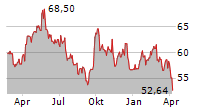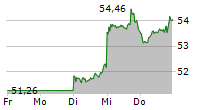NeoSmelt, a consortium of leading resources, energy and manufacturing companies working together on ways to produce lower-emissions steel1 from Pilbara iron ore, welcomes Australian Renewable Energy Agency (ARENA) support for its planned Western Australian pilot plant.
The consortium, founded by BlueScope, BHP and Rio Tinto also welcomes two new equity participants Woodside Energy and Mitsui Iron Ore Development to the NeoSmelt joint venture, with the five participants taking equal equity stakes in the joint venture.
NeoSmelt, which is managed by BlueScope, plans to develop Australia's largest ironmaking electric smelting furnace2 (ESF) pilot plant at the Kwinana Industrial Area, south of Perth, to demonstrate a method to produce lower-carbon emissions molten iron from Western Australian iron ore.
ARENA has committed A$19.8 million to support a Front-End Engineering Design (FEED) study for the NeoSmelt project, which aims to prove Pilbara iron ore can be used to produce lower-carbon3 iron using a direct reduced iron electric smelting furnace (DRI-ESF) pathway.
If successful, this has the potential to unlock longer term alternatives to the traditional blast furnace steelmaking route and help ensure the longevity of Australia's iron ore industry.
The project has now entered the feasibility phase. The feasibility study will help inform a final investment decision, expected in 2026.
BlueScope Chief Executive Australia, Tania Archibald, on behalf of the Joint Venture said: "Today marks a significant step forward in developing a technology for lower-carbon emissions steelmaking using Pilbara ore, and we're delighted by ARENA's $19.8 million commitment to support the feasibility phase of this groundbreaking R&D pilot plant.
"We also officially welcome Woodside Energy and Mitsui Iron Ore Development to the NeoSmelt joint venture, joining founding participants BlueScope, BHP and Rio Tinto. With this backing from government and industry leaders, we now have the opportunity to develop world leading technology that will have potential application across the global steel industry and provides the foundation for a future Australian lower-carbon emissions iron export industry."
Federal Resources Minister and Member for Brand, Madeleine King said: "The fuels, metals, fertiliser, chemicals and grain shipped from Kwinana have powered Western Australia and the region since the 1950s.
"Now Kwinana is playing a central role in the world's energy transition and a big part in global efforts to decarbonise. If we can decarbonise steel making, we will create far fewer emissions when building the cities of the world."
The ARENA funding adds to the A$75 million contribution from the Western Australian Government announced last year.
Western Australian Premier Roger Cook said: "Local manufacturing is crucial to my Government's plan for a future that is Made in WA which is why we are working closely with the Commonwealth Government and NeoSmelt to diversify Western Australia's economy. That way, we can maintain WA's nation-leading economy by supporting continued investment in new industries and creating more jobs for the future.
"As a Kwinana local, I'm proud to see this NeoSmelt facility play a part in our State's decarbonisation. This cutting-edge facility is an example of how governments and businesses are coming together to put WA at the forefront of the global push to slash emissions from steel production."
If approved, operations at the NeoSmelt pilot plant, which is expected to produce 30,000 to 40,000 tonnes of molten iron a year, are planned to begin in 2028.
With Woodside as the preferred energy supplier, the pilot plant would initially use natural gas to reduce iron ore to DRI. Once operational, the project aims to use lower-carbon emissions hydrogen to reduce iron ore.
Additional information
Pilot Electric Smelting Facility
The NeoSmelt pilot plant is intended to test and optimise production of iron from the electric smelting furnace (ESF), a type of furnace being developed by leading steel producers and technology companies targeting lower-carbon emission-intensity steel. The ESF is capable of producing iron suitable for the basic oxygen furnace steelmaking process. Iron ore is first converted to direct reduced iron (DRI) before being charged into the ESF. Together, the DRI-ESF equipment can replace the traditional blast furnace. Estimates show reductions of up to 80^ per cent in CO2 emission intensity are potentially achievable processing Pilbara iron ore through a DRI-ESF pathway, compared with the current industry average for the conventional blast furnace steel route.
Other lower CO2 emission-intensity production routes, such as electric arc furnaces, require scrap steel and DRI produced from high grade iron ore. The ESF potentially allows for greater flexibility in input raw materials, addressing one of the key barriers to wider adoption of lower-carbon emissions technology. The ESF also has the potential to be integrated into a steel plant's existing downstream production units.
Footnotes
1 Compared to the conventional blast furnace basic oxygen furnace (BF-BOF) process
2 Also known in the industry as an "electric melter".
3 Lower-carbon has the characteristic of having lower levels of associated potential greenhouse gas emissions when compared to historical and/or current conventions or analogues, for example relating to an otherwise similar resource, process, production facility, product or service, or activity.
Assumes utilisation of renewable energy to power the DRI-ESF facility and zero emissions hydrogen in the DRI plant. The remaining CO2 emissions are from carbon required in the process of making liquid iron suitable for the basic oxygen furnace steelmaking process.
View source version on businesswire.com: https://www.businesswire.com/news/home/20250616451117/en/
Contacts:
BlueScope
Michael Reay
M +61 437 862 472
E michael.reay@bluescope.com
Minister King
Nick Butterly
M 61 499 947 024
E nick.butterly@industry.gov.au
Premier Cook
Jordan Murray
M +61 419 102 823
E jordan.murray@dpc.wa.gov.au
Category: General



